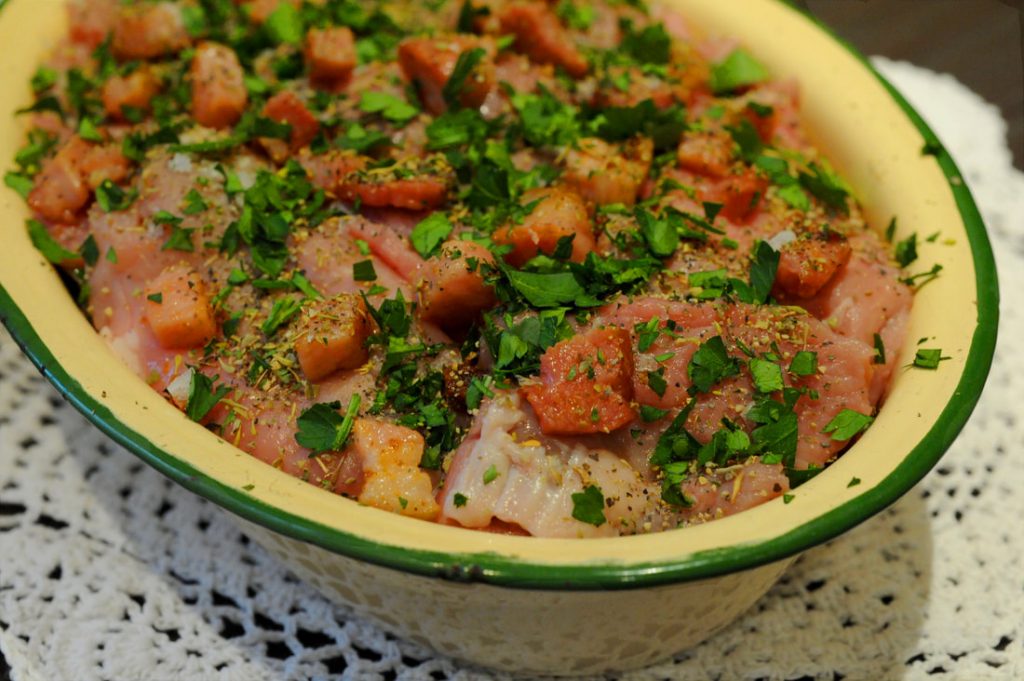Happy British Pie Week!
By Jove! Miss Windsor has certainly surpassed herself today! You see, in the spirit of British Pie Week, and my passionate quest in “Bringing food history alive”, I recreated Mrs Beeton’s Veal & Ham Pie.
You see, whilst searching for something frightfully unusual, yet awfully hearty and traditional which one could recreate for British Pie Week, thankfully, Miss Windsor stumbled upon Mrs Beeton’s Veal & Ham Pie recipe – in her 1906 edition of Mrs Beeton’s Book of Household Management – first published in 1861.
Darlings, now you’re forbidden to turn your nose up to this glorious dish, which I must admit, is of an acquired taste; yet delightfully delicious (believe me, I was extremely surprised by how mouth-watering tasty this recipe turned out to be!) British, suet crust, meat-based pie created with an unusual concoction of ingredients such as sliced veal fillet or cushion, chunky bacon bits, hard-boiled eggs, a sprinkling of seasoning, followed by a “gill” (translation: 140ml or 5 US fl oz.) of beef stock – and nout more!
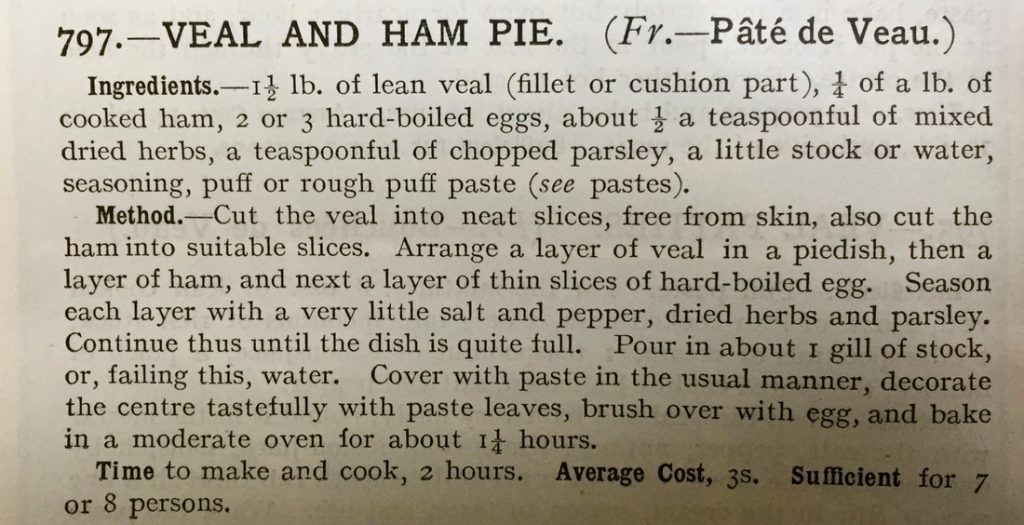
That’s right, darlings, you’ve read it correctly – boiled eggs, three in fact! Even Miss Windsor suffered a moment of doubt when she spied this rather interesting addition – a Victorian delicacy, I wonder? To to be honest, at first glance of this recipe, one presumed it could’ve been served during some kind of medieval banquet – curious to find out? Miss Windsor certainly is!
Okey dokey, I’ve just consulted one of my modern mentors: the jolly old internet, therefore, I discovered that we’ve been gorging on pies since the medieval times and maybe a trifle before then. Apparently, during the late 14th century a cookbook which included many recipes for all kinds of pies was written for the chefs of King Richard II.
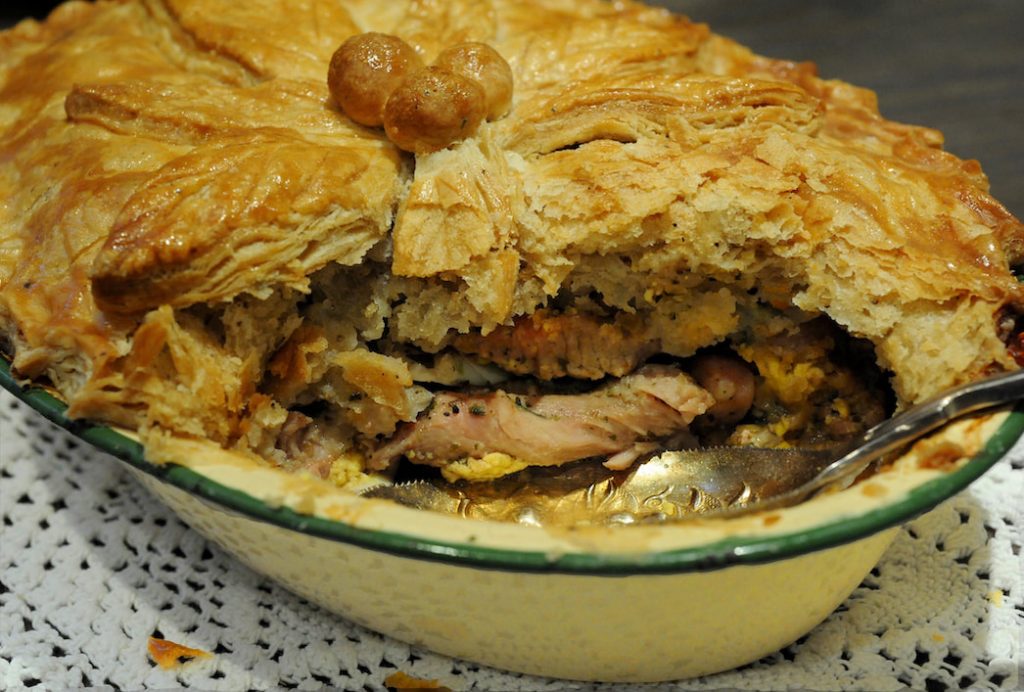
In fact, during such times a pie was commonly known as a “coffyn” or “coffin”, which means container. This was actually a stiff paste created with flour and water that would act as a robust vessel for baked sweet and savoury fillings. Apparently, in Elizabethan England, one would revel, “If it’s good, tis better in a coffyn.”
And rather interestingly, the Victorians were still making a similar kind of paste, which the cook of the house whipped together with ingredients such as flour, water, plus the addition of butter, egg, lard, or dripping.
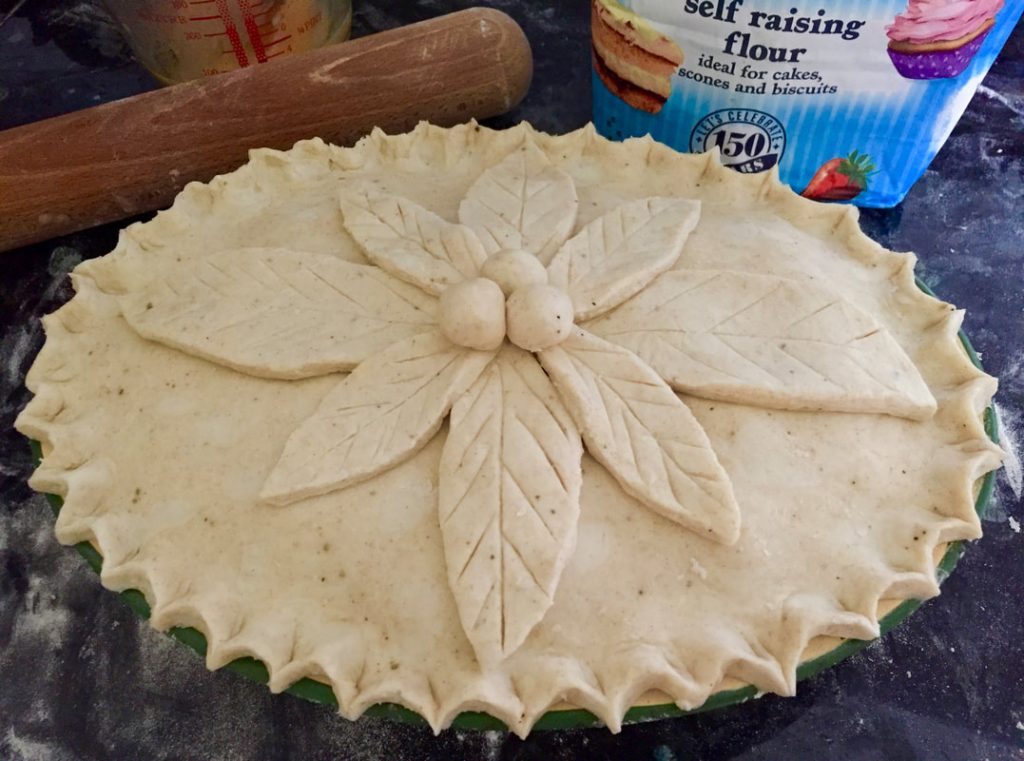
Also, during the Victorian era suet crust for meat and sweet pies was terribly popular and so easy to make – just flour, suet, cold water, baking powder, and/or sugar! I say, when Miss Windsor was a nipper Grandmother Josie advised that one must bring the pastry together with the blade of a knife, including the likes of suet pastry!
Therefore, I vividly recall Grandmother Josie reciting one of her mother’s culinary maxims, Great Grandmother Gertie’s to be precise, “Stir with a knife, stir up strife!”
Darlings, I like to think it’s an old wive’s tale, but admittedly one is very superstitious, so if I ever find myself armed with a knife immersed in a bowl of pastry dough, I naturally mutter that rather ghastly phrase, which of course, as a matter of caution, I do so with all my fingers crossed, including my teeny toes!

Moving swiftly on, now according to the food history records, during the medieval times, one would feast on pies made with a hot water crust. You see, back in those days of beyond pies were an elaborate and exceedingly grand centrepiece of the banqueting table – How fabulous!
They were baked in decorative moulds, often glazed, and on occasion would boast a stuffed animal or bird which would, of course, suggest the filling of the pie.
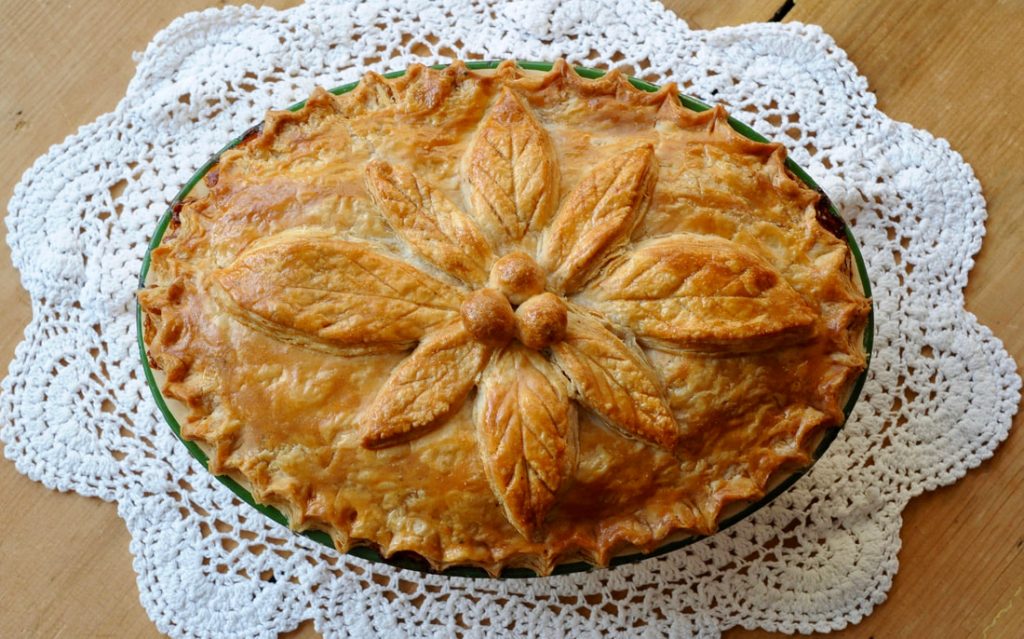
Just one more thing; whilst I scoured through the jolly old internet for snippets of information about veal and ham pie, I learned that many recipes require a hot water crust, and some recipes call for whole hard-boiled eggs, not slices. Therefore, suffice to say, I do believe some kind of version of veal and ham pie would’ve perched most comfortably on a medieval banqueting table.
Darlings, now before you dash off to your kitchen to recreate this scrumptious slice of food history, I must say, if you’re a tad put off by the addition of hard-boiled eggs, then may I suggest slices of parboiled potatoes instead.
Cheerio for now,
Miss Windsor x
ALL PHOTOGRAPHY BY MISS WINDSOR – EXCEPT FOR 1940’S FAMILY PHOTO!
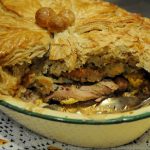
Mrs Beeton’s Veal & Ham Pie
Ingredients
Suet Pastry
- 350 g (2 & 1/3 cups) self-raising flour
- 180 g (1 & 3/4 cups) vegetable or beef suet
- pinch of salt
- a sprinkling of coarse black pepper
- cold water
- whisked egg for the glaze
Pie Filling
- 680 g approx. (1.5 lbs US) lean veal (fillet or cushion) cut into neat slices by your butcher!
- 220 g (1 heaped cup) cooked bacon bits – diced
- 3 hard-boiled eggs or parboiled potatoes – thinly sliced
- 1 heaped teaspoon of dried mixed herbs
- 1 heaped tablespoon of chopped fresh parsley
- 140 ml (5 US fl oz.) beef stock
- salt and pepper
Instructions
Suet Pastry
-
Pre-heat oven to 180*C / 160*C Fan / 355* F / gas mark 4.
-
First off, let’s get cracking with the suet pastry! Into a large mixing bowl sieve the flour, then add the suet, salt, and pepper. Mix well.
-
Add a few drops of cold water at a time and with a curving motion mix with a knife.
-
Darlings, this pastry must not be dry, so add enough water and continue to mix with a knife until the dough is quite sticky.
-
Now using you’re pretty little mitts, bring the dough together until it’s rather smooth and elastic. Cover and rest for a while.
The Filling
-
Into your pie dish of choice, arrange a layer of veal and season with salt and pepper. Then add a layer of sliced boiled egg (or potatoes) and some cooked bacon bits. Season with mixed herbs and chopped parsley.
-
Repeat step one until you have finished the ingredients.
-
Pour over the stock and set to one side – How spiffing!
-
Darlings take 3/4 of your dough and place onto a floured surface and start gently rolling until you’ve formed a circle or square shape to cover your choice of vessel. Oh, and please make sure that your pastry lid is rolled fairly thick – Ta very muchly!
-
Cover the pie filling with the pastry and carefully trim off the edges.
-
Now onto the creative bit – How exciting! Using the last of your dough festoon your pie with some decorative leaves and stick them onto the lid with some whisked egg.
-
Darlings, you will probably have some left-over pastry, which one may use if needs must, or alternatively why not make one or two jam puffs out of the leftovers!
-
Once festooned with pretty leaves, brush the whole pie lid with whisked egg.
-
Pop in the oven and bake for exactly 1 and 1/4 hours.
-
Serve piping hot with a dash of gravy and some seasonal vegetables – voila!

